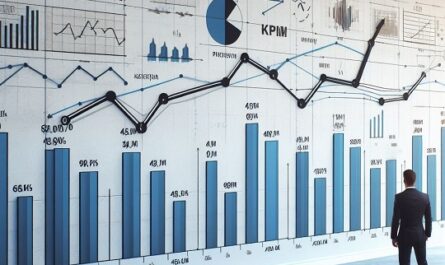In the ever-changing world of supply chain management, businesses are always looking for ways to make their operations better, earn more money, and lower risks.
To do this, they use two main strategies: cutting costs and preventing costs.
These strategies can work together, and which one to use depends on what the business wants to achieve.
In this blog post, we’ll explore cost reduction and cost avoidance in supply chain management, talking about why they’re good, how to use them, and when to use each one.
Before we go further into this topic, don’t forget to follow my LinkedIn account. You’ll get more helpful insights on supply chain management there.
Table of Contents
What is Cost Reduction?
Cost reduction is like a plan to cut down on the money you spend in your supply chain. It means carefully looking at how you do things and finding places where you can do them better and cheaper. This could mean spending less on making things, using transportation smarter, or spending less on storing stuff.
The main goal of cost reduction is to make your business more profitable right away by spending less on how you run things. In simple terms, it’s about finding ways to save money and make your supply chain work more efficiently.
Benefits of Cost Reduction
Using cost reduction strategies can bring you some big advantages that can really help your supply chain and your overall business success.
Here’s a closer look at what you can get.
More Money
When you actively work on reducing costs, you get a chance to make more money. By making your operations work better and spending less on unnecessary things, you can increase the money you make. That means more income and more profit for your business.
Be Better Than the Rest
When you cut costs, you can offer your products or services at lower prices. This makes you stand out in the market because lower prices can attract more customers and help you get a bigger share of the market. Being a strong competitor is crucial for keeping your business going and growing.
Use Resources Wisely
As you spend less money, you’ll have extra resources that you can use for smart investments. This might mean putting money into making new and better things or spending on advertising to get more customers. Cost reduction lets you make smart choices about where to invest for the future.
Get Things Done Faster
Often, when you reduce costs, you also make your operations work better. By finding and fixing things that don’t work well in your supply chain, you can make your processes smoother, get orders out quicker, and make customers happier. Happy customers come back and tell others, which helps your business grow.
Budget Like a Pro
When you have lower costs, you can be more flexible with your budget. With fewer expenses, you can use your money for other important parts of your business, like making new products, going into new markets, or training your employees. This flexibility is crucial for staying competitive and adapting to changes in the market.

Using cost reduction strategies helps you improve your supply chain, make more money, and stay ahead of the competition. It also gives you the financial freedom to invest in your business’s future growth and ensures that your operations run smoothly and make customers happy.
Putting Cost Reduction Strategies into Action
Now, let’s see how you can actually use these cost reduction strategies in your supply chain management.
Cost Analysis
To start cutting costs, you need to carefully look at where you’re spending money in your supply chain. Here’s what to do:
- Check every part of your supply chain to find places where you could save money, like how you make things, move them, and store them.
- Find specific places where you’re wasting money and try to stop it.
- Review your deals with suppliers and try to negotiate better terms.
Benchmarking
To know if your cost-cutting is working, compare what you spend to what others in your industry spend. Here’s how:
- Find out what’s normal in your industry and what things you should be measuring to see if you’re doing well.
- Compare your spending to the industry standards to find areas where you might be spending too much.
- Use this info to set goals for how much you want to save.
Supplier Choices
Picking the right suppliers can save you money. Follow these steps:
- Think about working with suppliers who can give you stuff cheaper or faster.
- Make long-term partnerships with suppliers who always have good prices.
- Check how well your suppliers are doing regularly to make sure they’re giving you the best value.
Automation and Tech
Technology can help you save money. Here’s what to do:
- Invest in machines and tech that make your supply chain work smoother.
- Use software to manage your stuff better and avoid having too much inventory that costs money to store.
- Think about using automated systems to take care of orders and save you time and effort.
Inventory Control
Keeping an eye on what you have in stock is key. Here’s what you can do:
- Watch how much stuff you have and how you handle it to avoid having too much and paying for storage you don’t need.
- Use software and systems to keep track of your stuff, predict what you’ll need, and order it just in time.
- Consider using “just-in-time” practices to keep costs down while making sure you have what you need when you need it.
By using these cost-cutting strategies, you can make your supply chain leaner and cheaper. This not only helps you make more money but also makes you more competitive in the market.
Keep in mind that you should keep an eye on things and adjust your strategies over time to keep your cost-cutting efforts successful in the long run.
You might also like:
- Exploring Supply Chain Costs: Everything You Need to Know
- Compete or Collaborate with Competitors? Which One is Better?
Understanding Cost Avoidance
Now, let’s talk about cost avoidance and how it works in your supply chain management.
Cost Avoidance: When you think about cost avoidance, you’re focusing on a strategy that helps you stop future costs from happening in your supply chain.

It’s all about being proactive and finding ways to prevent problems that could lead to unexpected expenses or disruptions.
The main aim of cost avoidance is to reduce the chances of facing big financial risks in the long run and keep your supply chain running smoothly.
Benefits of Cost Avoidance
Using cost avoidance strategies in your supply chain management can bring you lots of important advantages.
Here’s a closer look at what you can get from using these strategies.
Risk Control
When you use cost avoidance strategies, you’re ready to deal with problems before they become expensive disasters. Here’s why it’s good for you:
- Finding and solving potential problems in advance saves you from costly surprises.
- You can protect your business from things that might disrupt it, like problems with quality or other risks that could mess up your operations and finances.
Keeping Things Going
Cost avoidance focuses on managing risks, so your supply chain keeps running smoothly. This is super important because it stops costly downtime. Here’s how it helps you:
- Avoiding disruptions means you can keep making things, delivering them, and doing all the important stuff without any interruptions.
- This means you can keep giving great service to your customers, which helps you stay competitive.
Saving Money in the Long Run
Even though cost avoidance strategies might need some money upfront or changes in how you do things, they often save you a lot in the long term. Here’s why it’s good for you:
- You might have to spend some resources at the start to prevent problems or make your processes better.
- But over time, these investments pay off by stopping expensive issues like supply chain problems or quality troubles from happening.
Trusting Your Suppliers
Making sure your suppliers are reliable is super important. This way, you don’t have to deal with costly problems if your suppliers fail or run out of stuff. Here’s why it’s helpful:
- By building strong relationships with your suppliers and keeping an eye on how they’re doing, you can lower the chances of supply chain problems.
- Reliable suppliers make your supply chain work smoothly and consistently.
Protecting Your Reputation
Keeping your company’s good name is really important. Avoiding supply chain troubles and keeping your products top-notch helps you keep your reputation and your customers’ trust. Here’s how it matters:
- A good reputation is valuable and helps you attract and keep customers.
- Avoiding problems with quality and supply chain disruptions shows that you’re serious about delivering reliable products and services.
Using cost avoidance strategies not only keeps your finances safe but also makes sure your operations run smoothly, keeps your reputation strong, and sets you up for long-term success.
By dealing with potential risks ahead of time and focusing on keeping things going, you build a supply chain that’s tough and dependable, ready for any challenges that come your way.
Putting Cost Avoidance Strategies into Action
Spotting Risks
When you start using cost avoidance, the first thing you need to do is find the problems that might pop up in your supply chain. Here’s how:
- Do a deep dive into potential risks, like things that could mess up your supply chain, quality issues, rule changes, or problems in different parts of the world.
- Look at past data and trends to figure out where issues have come up before or might happen in the future.
Mixing Up Suppliers
To handle the risks of relying too much on one supplier or source, think about getting different options. Here’s how:
- Check out working with more than one supplier or vendor who can give you the same stuff or services.
- Build relationships with suppliers in different places so that if one area has problems, it doesn’t hurt you too much.
Keeping an Eye on Things
To avoid surprises, it’s important to keep watching your supply chain. Here’s what you can do:
- Use data and tools to see what’s happening in your operations right now.
- Make important goals (KPIs) and keep checking them to spot trends or weaknesses.
Getting Ready for Trouble
Create plans for when things go wrong. Here’s how to make good plans:
- In your plans, have ideas for what to do if risks come up and options for getting what you need.
- Make sure someone is responsible for making the plan happen and checking if it’s working.
Following the Rules
To make cost avoidance work, you’ve got to know and follow the rules. Here’s how:
- Keep up with rules that are specific to your industry and make sure your supply chain does things the right way.
- Keep checking and updating how you follow the rules as they change.
By using these cost avoidance strategies, you can lower the chances of unexpected costs and problems in your supply chain. This doesn’t just help your money; it also keeps your good name and builds trust with your customers and partners. Just remember to stay watchful and keep looking for risks to make your cost avoidance efforts work well for the long term.
You might also like:
- How to Build a Reliable and Trustworthy Supply Chain Management Team: You Can Lead the Way!
- Unlocking Progress: The Power of Embracing Change
Combining Both Strategies for Supply Chain Success
Know Your Goals
To make the most of both cost reduction and cost avoidance, start by figuring out what your business needs right now. Decide if you want to cut costs that are already there or stop problems before they happen. Here’s why it’s important:
- Understand what your business needs and what you want to achieve financially.
- Figure out if you should focus on cutting costs or preventing future risks.
Check for Dangers
Identify the big risks in your supply chain and put them in order of importance. Some risks might need quick action to avoid major trouble. Here’s why this helps:
- Get a clear picture of which risks could really mess up your supply chain.
- Decide which risks need to be dealt with first based on how much they could hurt your operations and finances.
Use Resources Wisely
Be smart about how you use your resources. Find a balance between cutting costs and dealing with risks. Here’s what to do:
- Use some of the money you save from cost reduction to invest in preventing risks.
- Make sure you have enough resources to work on both reducing costs and managing risks.
Keep an Eye Out
Set up a system to keep watching how well your strategies are working together. Be ready to change your approach as things change in your business world. Here’s why this is a must:
- Keep checking if your strategies are helping you save money and handle risks.
- Be ready to adjust your plans as the market changes, new risks show up, or your business priorities shift.
By following these steps and blending both cost reduction and cost avoidance strategies, you can create a strong and money-smart supply chain. This way, you not only save money right away but also make your supply chain tough against future risks and problems. It helps you stay flexible and ready to succeed in a business world that’s always changing.
Case Study: Combining Cost Strategies for Success
Let’s dig into an example of how a manufacturing company that makes electronic parts used an integrated approach to its supply chain management. By combining both cost reduction and cost avoidance strategies, they found a comprehensive solution:
Company Overview: Imagine you’re the manager of a company that makes electronic components. Lately, you’ve been facing a big problem because the cost of materials keeps going up, which is making it more expensive to produce your items. At the same time, you’re worried about supply chain problems because of issues in the world.
Integrated Strategies Applied:
- Cutting Costs: To deal with the immediate issue of higher production costs, you take some steps:
- Renegotiating Deals with Suppliers: You work closely with your current suppliers to talk about new terms that are better for your business, like lower prices or more time to pay.
- Making Production Better: You invest in ways to make your manufacturing process work smoother, produce less waste, and get more done.
- Using Machines: You start using machines to do some of the work in manufacturing, which helps you save on labor costs and makes things run better.
- Supplier Choices: Knowing there’s a risk because of things happening around the world, you make changes to where you get your materials:
- Finding New Suppliers: You look for new suppliers in places that aren’t as affected by the world’s issues. This way, you don’t rely too much on suppliers from high-risk areas.
- Building Relationships: You make sure these new suppliers are good by checking if they can provide what you need and keep up your quality standards.
- Getting Ready for Problems: To be ready for any supply chain issues, you create a plan:
- Spotting Risks: You find out what might cause problems in your supply chain and which ones are most likely.
- Making Backup Plans: You make plans for what to do if things go wrong. This includes having other ways to get what you need and being ready to act quickly.
- Regular Checks: You keep checking if your plans work and update them as things change.
Benefits of Integrated Strategies:
By using these strategies together, the company gets some big benefits:
- Lower Costs Right Away: Cutting costs means the company starts making more money because it costs less to produce things.
- Protected from World Problems: Diversifying suppliers and having a plan keep the company safe from the bad effects of issues in the world.
- No Downtime: The plan means the company can keep running smoothly even if there are problems, so they don’t lose money.
- Saving Money in the Long Term: Even though there’s an initial cost for machines and finding new suppliers, these things save a lot of money by stopping problems from happening.
- Good Reputation: The company keeps its good name by not having supply chain problems and by giving customers high-quality products.
This case study shows how a mix of cost reduction and cost avoidance strategies can help with both current money problems and future risks.
By cutting costs, finding different suppliers, and having a plan for issues, the company not only saves money now but also keeps the supply chain strong and ready for success in the long run.
Conclusion
In the world of supply chain management, organizations need to make smart decisions to make their operations better, earn more money, and avoid problems. The choice between cost reduction and cost avoidance strategies depends on what you need.
Cost Reduction is about spending less on what you’re already doing and making more money right away. It means looking at your expenses, comparing them to what’s normal, and doing things like working better with your suppliers, using machines, and handling your inventory well.
Cost Avoidance, on the other hand, is about stopping future problems from costing you money. It’s like being ready for trouble by finding out what could go wrong, getting different suppliers, and keeping an eye on what’s happening.
Often, the best way to go is to use both cost reduction and cost avoidance strategies together. This helps you save money now and be prepared for problems in the future, so your business can keep going and do well in the long run.
To succeed in today’s competitive business world, supply chain managers need to think about what matters most to them, spend their resources wisely, and keep watching and changing their strategies to deal with the always-changing world of supply chain management.
I hope you find it helpful!
Please share this article with your colleagues so they can also benefit. For more insights on supply chain management, follow my LinkedIn account. You’re free to use all articles on this blog for any purpose, even for commercial use, without needing to give credit.

 by
by 

